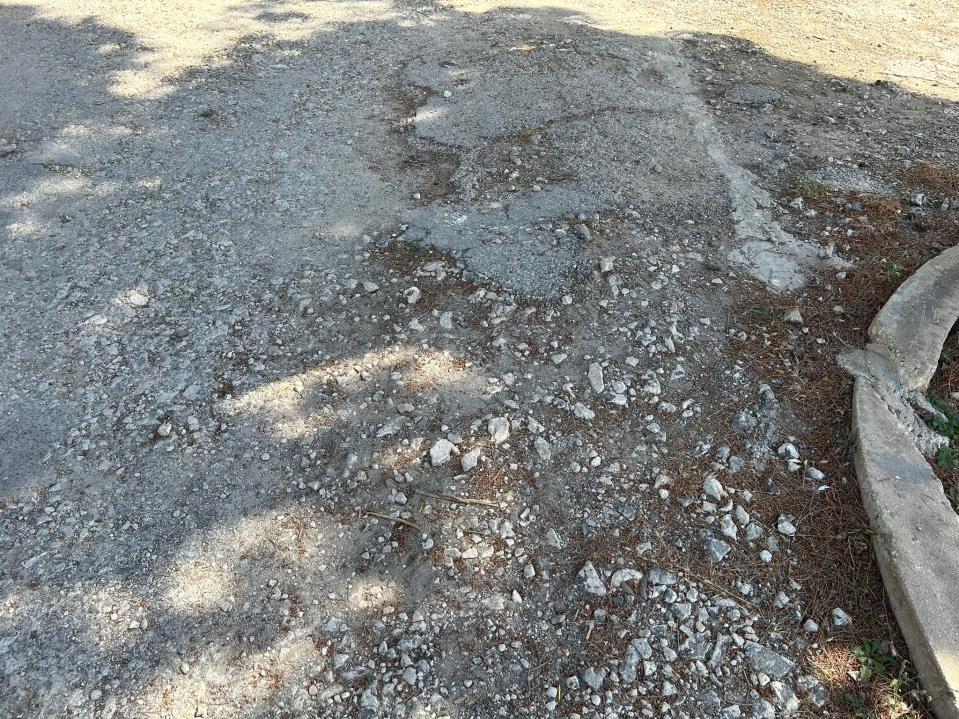On Mother's Day this year, I took my mother to the Addolorata Cemetery in Paola, Malta's largest burial ground, to pay respects to her own parents.
What should have been a quiet morning with moments of remembrance turned into a struggle, one that spoke a truth that many of us already knew: Malta is simply not made for people with disabilities.
My mother has been a wheelchair user for around nine years. Visiting her parents' graves is something she tries to do a few times a year.
But since she started using a wheelchair, these visits have become increasingly difficult - because of the condition of the cemetery grounds.
My grandparents' graves are not very far from the back gate, but reaching them does require going down the long pathway, and into the smaller, maze-like trails leading to various graves.

The pathway leading to the section we wanted to go to was cracked, uneven, and full of loose gravel, with jagged stones and bumpy dips that caught the wheelchair wheels over and over again. A passer-by even offered to help me push, together lifting the wheelchair forward.
I took some photos that day, partly in disbelief at the state of the pathway, and partly in frustration.
One photo showed the path covered in rough gravel, resembling more of a hiking trail than a cemetery walkway.
In another, the cracked asphalt stretches out between rows of graves, clearly unfit for anyone able-bodied, let alone someone in crutches, or in a wheelchair.
These are not isolated patches, they reflect the general condition of the terrain in many areas of the cemetery.

One could so easily trip on the uneven path, with the risk increasing for elderly visitors or anyone with mobility issues.
This is a familiar scenario for anyone who uses a wheelchair or accompanies someone who does, as the physical infrastructure in Malta often fails to meet even basic accessibility standards.
And we're not talking only about the cemetery.
Many pavements are narrow or terribly broken and in need of repair. Ramps in many areas are often absent, and public spaces, whether streets, squares or town centres, can feel out of reach for many people.
Cemeteries should not be overlooked in conversations about accessibility. They are places for remembrance and reflection, and access to them should be universal.
Visiting a loved one's grave should not depend on a person's physical ability or whether someone is available to help push a wheelchair over difficult terrain.

The Addolorata Cemetery is managed by the government, and the same government has a responsibility to provide safe and dignified access to all members of the public, including those with mobility impairments.
While some areas are more accessible than others, there is a clear lack of investment towards improving the pathways at the cemetery.
Last year, Agenzija Sapport's CEO Oliver Scicluna told The Malta Independent on Sunday that he would rate the quality of life of a person with a disability in Malta as being only five out of 10, meaning that so much more needs to be done.
One of the many challenges he mentioned was Malta's pavements, which he said are not up to standard for persons with disabilities in the country.
Scicluna had said that while the standards are there, they are not being followed.
"It is futile to speak about de-institutionalisation, and independent community living (for persons with disabilities), if the community itself is not accessible, for them to carry out their daily needs," Scicluna had said.
He said that he communicates with the Commissioner for the CRPD Rhoda Garland, on such issues, adding that there needs to be a larger outreach for accessibility, as well as accessible infrastructure.
The visit to the Addolorata Cemetery was a reminder of how much work remains to be done. Small improvements, such as re-laid paths, and properly maintained surfaces, could go a long way to ensure that nobody is excluded from any space - not just cemeteries, but across the board.
Improving accessibility should not be seen as a luxury or an afterthought, but as a necessary step toward creating a society that respects the dignity and rights of all its members.
Wheelchair users, elderly citizens, parents with pushchairs, and anyone recovering from an injury all benefit from smoother paths, properly designed ramps, and clear signage; improvements which serve everyone, including persons with disabilities.
An inclusive society is one where all citizens are able to participate fully in public life, whether that means going to work, taking public transportation or simply visiting the cemetery to pay respects to their loved ones.
Unfortunately, when such basic access is restricted, the burden often falls on the individual and their families to try to work around it, often at personal and emotional cost. My mother will not be visiting the cemetery any time soon.
My hope is that institutions like the one responsible for the Addolorata take this seriously, as while a proper infrastructure upgrade might not be high on the priority list, it would quietly, and significantly, improve people's lives.